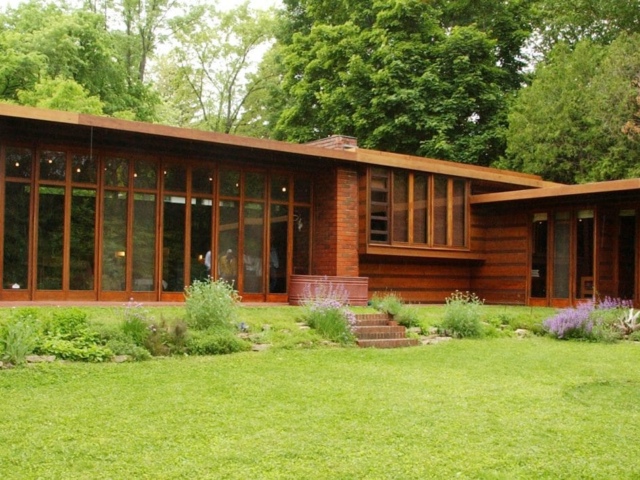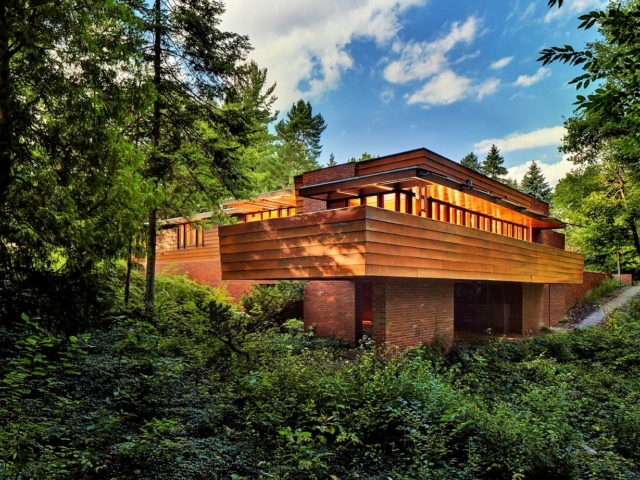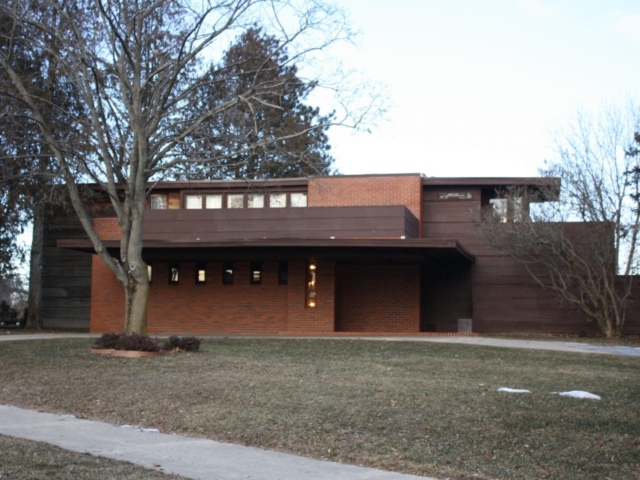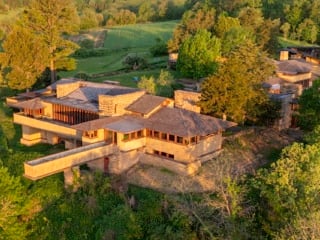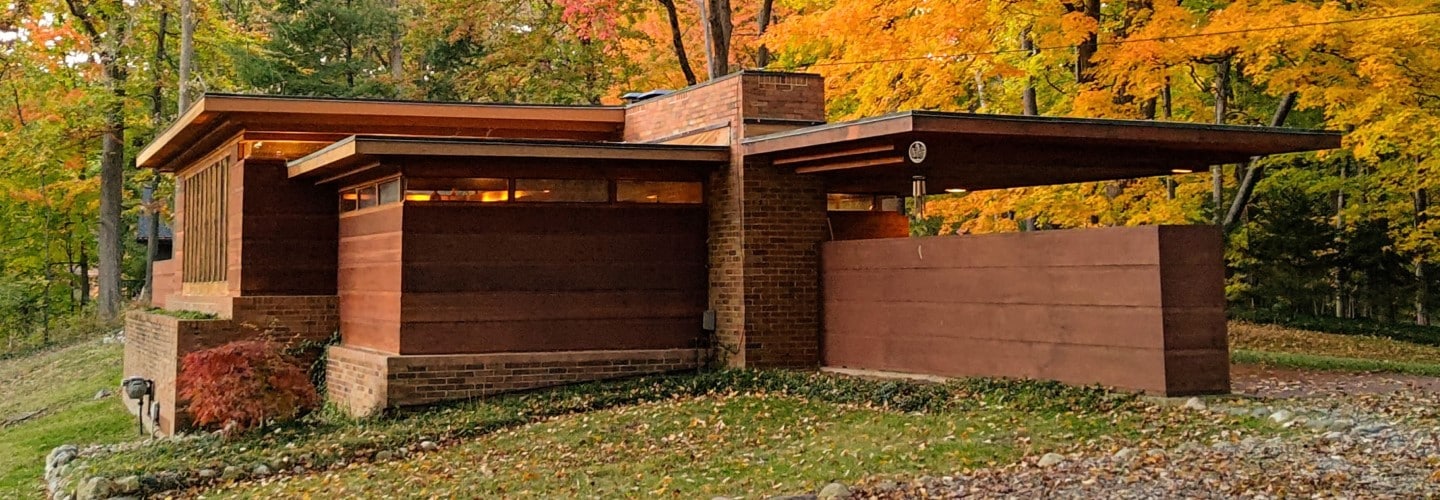
Goetsch-Winckler House
Built in 1940 and listed on the National Register of Historic Places in 1995, Frank Lloyd Wright’s Goetsch–Winckler House is widely considered to be one of the most elegant examples of Wright’s Usonian ideal.
Designed in 1939 for Michigan State University art professors Alma Goetsch and Kathrine Winckler, the Goetsch–Winckler house embodies Wright’s vision of an affordable yet artistic lifestyle in harmony with the natural environment.
Both Goetsch and Winckler were progressive artists and educators, known for championing creative education. The two women were familiar with Jacobs I and Wright’s Broadacre City concept, and approached Wright to design a Usonian community for themselves and six other faculty members and their families a few miles east of nearby Michigan State University. Wright designed the entire community, however, attempts to secure loans for the project failed because Wright’s designs were deemed too radical. Determined to live in their Wright home, Goetsch and Winckler pooled what funds they had and built one for themselves.
The resulting 1,350-square-foot home is conservative in design and yet entirely functional, with a two-bedroom, one-bath layout and an expansive main room that doubles as an art studio and living space. Wright tailored the design to the their needs, and incorporated hidden storage spaces and built-in furnishings to maximize utility within the home’s modest footprint. Practical adjustments were made to stay within their $6,600 budget, including substituting redwood for cypress, using plywood panels for the ceiling, and doing away with the perforated boards over the clerestory windows. Ultimately, the home was completed just $5.27 under budget!
Listed on the National Register of Historic Places in 1995, the Goetsch–Winckler House has been carefully restored and preserved by recent owners. Currently, overnight stays are available through Airbnb, and the current owners regularly host community events and free private tours to share this incredible work of art with the public.
Usonian homes, like this one, were part of Wright’s vision for decentralized, affordable, and harmonious American living. And it should come as no surprise that this home is often considered one of Wright’s most elegant in both form and function.

